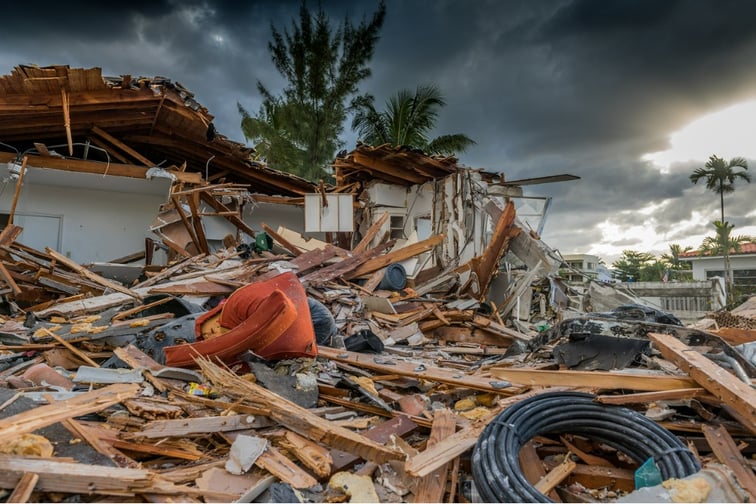

Extreme weather events in 2021 – including a deep winter freeze, severe thunderstorms, floods, heatwaves and a major hurricane – resulted in annual insured losses from natural catastrophes of an estimated US$105 billion (around CA$135.07 billion), according to a new report from the Swiss Re Institute. That’s the fourth-highest loss since 1970.
While Hurricane Ida was the costliest natural disaster in 2021, winter storm Uri and other secondary perils caused more than half of the total losses. Man-made disasters caused another US$7 billion in insured losses, resulting in estimated global insured losses of US$112 billion in 2021.
“In 2021, insured losses from natural disasters again exceeded the previous 10-year average, continuing the trend of an annual 5-6% rise in losses seen in recent decades,” said Martin Bertogg, head of cat perils at Swiss Re. “It seems to have become the norm that at least one secondary peril event – such as a severe flooding, winter storm or wildfire – each year results in losses of more than USUS$10 billion. At the same time, Hurricane Ida is a stark reminder of the threat and loss potential of peak perils. Just one such event hitting densely populated areas can strongly impact the annual losses.”
The two costliest natural disasters of 2021 both happened in the US. Hurricane Ida caused US$30 billion to US$32 billion in estimated insured damages, including flooding in New York, while winter storm Uri also caused billions in losses. The costliest event in Europe was the July flooding in Germany, Belgium and nearby countries, which caused up to US$13 billion in insured losses, with economic losses of more than US$40 billion, Swiss Re Institute reported. This indicates a very large flood protection gap in Europe, the institute said. The flooding was the costliest natural disaster for the region since 1970 and the second-highest in the world after the 2011 Thailand flood.
“The impact of the natural disasters we have experienced this year once again highlights the need for significant investment in strengthening critical infrastructure to mitigate the impact of extreme weather conditions,” said Jérôme Haegeli, group chief economist for Swiss Re. “Investments in infrastructure support sustainable growth and resilience and need to be upscaled. In the US alone, the infrastructure investment gap to maintain critical and aging infrastructure is USUS$500 billion on average per year until 2040. Partnering with the public sector, the insurance industry is critical for strengthening society’s resilience to climate risks by investing in and underwriting sustainable infrastructure.”
Other destructive secondary perils in Europe included severe convective storms in June, with thunderstorms, hailstorms and tornadoes causing widespread property damage in Germany, Belgium, the Netherlands, the Czech Republic and Switzerland. Resulting insured losses were an estimated US$4.5 billion. Elsewhere, there was severe flooding in China’s Henan province and British Columbia in Canada.
Canada, adjacent parts of the US and many parts of the Mediterranean posted record heat this year, according to the Swiss Re Institute. At the end of June, a “heat dome” set a new Canadian temperature record of nearly 50°C (122°F) in a village in British Columbia. Temperatures in Death Valley, Calif., reached 54.4°C (nearly 130°F) during one of the heatwaves that hit the Southwest this year. The heat was often accompanied by destructive wildfires. However, the associated insured losses were lower than in recent years, when fires affected more populated areas. In California, wildfires destroyed large forest areas, but compared to the previous three years, encroached on areas of lower property concentration.
